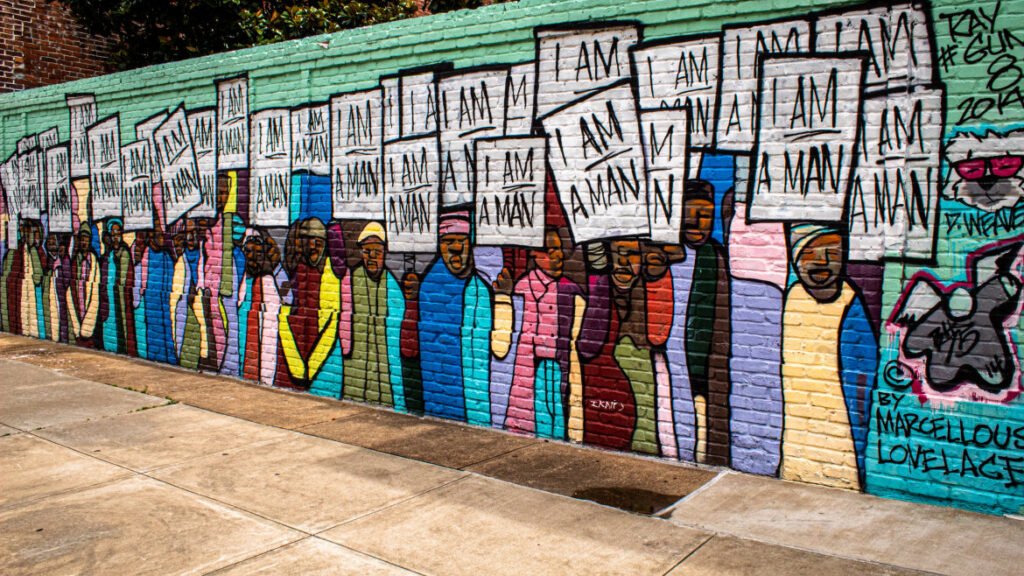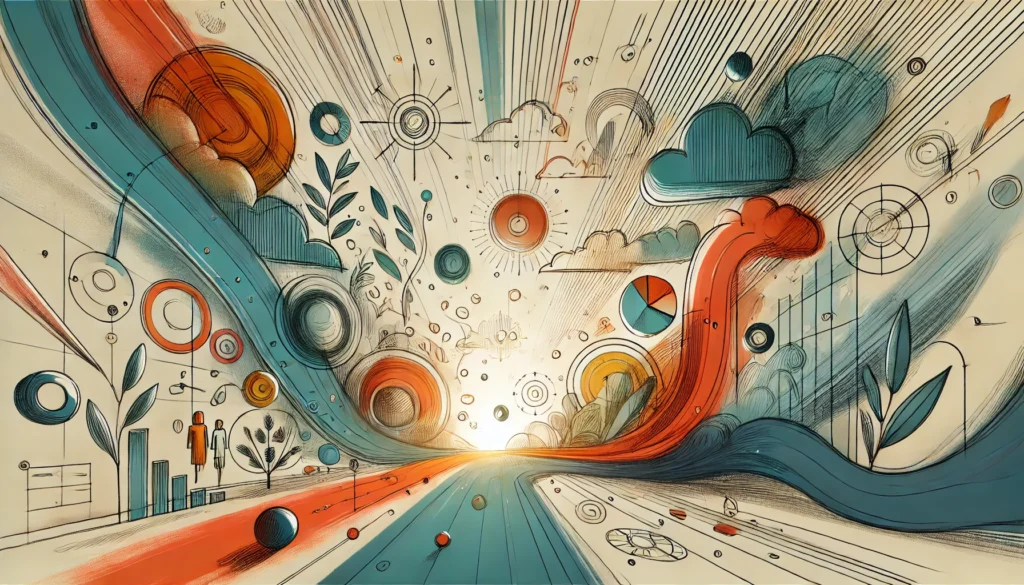Introduction
Art is a mirror reflecting the complexities of our society, encompassing an array of emotions, experiences, and cultural narratives. While beauty is often seen as the defining attribute of art, Khalil Chishtee challenges this conventional wisdom, inviting us to explore the deeper, often uncomfortable truths embedded in artistic expression. His works are not merely aesthetically pleasing; they provoke thought, inspire dialogue, and challenge our perceptions of beauty and value. In this comprehensive exploration of https://multigrafico.com/khalil-chishtee-no-todo-el-arte-es-belleza/ art, we will delve into his innovative techniques, the themes he explores, and the profound message he conveys: not all art is beauty.
The Essence of Khalil Chishtee’s Art
Khalil Chishtee is renowned for his unconventional approach to art, utilizing discarded materials and found objects to create captivating pieces. This creative methodology not only emphasizes his resourcefulness but also serves as a commentary on contemporary societal issues. Each of his works is a reflection of his artistic philosophy, pushing the boundaries of traditional art forms and redefining what art can represent.
The Use of Non-Traditional Materials
One of the hallmark features of Chishtee’s artistry is his use of non-traditional materials. He often incorporates items that many would consider trash—plastic, metal, wood—transforming them into powerful statements. This choice of materials is not just a stylistic preference; it embodies his belief that beauty can be found in the most unexpected places. By repurposing these discarded items, Chishtee challenges viewers to reconsider their perceptions of waste and value.
For instance, a sculpture made from old plastic bottles might appear visually striking, but it also carries a message about environmental responsibility and the consequences of consumerism. In this way, Chishtee’s art acts as a catalyst for reflection, urging us to confront our habits and their impact on the world.
Themes of Cultural Identity
Khalil Chishtee’s work is deeply rooted in his cultural identity, reflecting his personal experiences as well as broader societal narratives. He skillfully blends traditional elements with contemporary practices, creating a unique visual language that resonates with diverse audiences. This fusion of styles and materials allows him to explore themes of identity, belonging, and cultural representation.
For many artists, cultural identity is a source of inspiration, but Chishtee takes it a step further by using his background as a lens through which to view the world. His work speaks to the complexities of living between cultures, navigating the nuances of heritage, and the challenges that arise from globalization. Through his art, Chishtee invites viewers to engage with these themes, fostering a deeper understanding of the diverse experiences that shape our collective identity.
Challenging Conventional Notions of Beauty
Chishtee’s assertion that “not all art is beauty” serves as a pivotal theme throughout his work. In a world that often prioritizes aesthetic appeal, he encourages us to embrace the idea that art can be raw, unsettling, and thought-provoking. This perspective challenges the traditional hierarchy of beauty in art, inviting viewers to engage with deeper meanings and messages.
The Role of Emotion in Art
Emotion plays a central role in Khalil Chishtee’s work. Each piece is infused with feelings that resonate with the viewer, evoking a range of reactions from admiration to discomfort. For instance, a sculpture depicting human figures constructed from industrial materials might inspire awe at its craftsmanship while simultaneously provoking unease at the implications of its composition.
Chishtee’s ability to evoke strong emotions is intentional; he seeks to engage the viewer on a visceral level. By challenging our comfort zones, he opens up a dialogue about the complexities of the human experience. This emotional engagement transforms his art into a vehicle for introspection and discussion, allowing viewers to confront their feelings and thoughts about the themes presented.
The Intersection of Art and Activism

In today’s rapidly changing world, artists have a unique responsibility to address pressing social and political issues. https://multigrafico.com/khalil-chishtee-no-todo-el-arte-es-belleza/ recognizes this role, utilizing his art as a platform for activism. His work embodies the belief that art can be a powerful tool for social change, prompting viewers to reflect on their responsibilities as global citizens.
Addressing Environmental Concerns
Khalil Chishtee’s art often highlights environmental issues, particularly the consequences of consumerism and waste. By using reclaimed materials, he draws attention to the impact of our choices on the planet. This choice of materials serves as both an artistic statement and a call to action, urging viewers to reconsider their consumption habits.
For example, a large installation made from plastic waste can serve as a stark reminder of the environmental crisis we face. This powerful visual representation encourages viewers to engage in conversations about sustainability, prompting them to consider their role in protecting the environment.
Social Justice and Representation
In addition to environmental themes, Chishtee’s work addresses social justice issues, particularly the representation of marginalized communities. By exploring themes of identity and belonging, he sheds light on the struggles faced by those often overlooked in mainstream narratives. This commitment to social justice is reflected in his choice of subjects, materials, and the messages embedded in his work.
Chishtee’s art encourages viewers to confront uncomfortable truths about society and the structures that perpetuate inequality. By addressing these issues, he fosters a more inclusive conversation within the art community and beyond, reminding us that art can be a catalyst for change.
The Impact of Khalil Chishtee’s Work
The influence of Khalil Chishtee’s art extends far beyond the gallery walls. His work resonates with audiences, prompting reflection, discussion, and even action. As he challenges conventional definitions of beauty, he encourages viewers to embrace a more expansive understanding of art and its potential impact.
Encouraging Dialogue
Chishtee’s art serves as a starting point for meaningful dialogue among viewers. His thought-provoking pieces invite conversations about beauty, identity, and social responsibility. Through these discussions, audiences can share their interpretations and personal experiences, fostering a sense of community and connection.
For instance, a group of viewers might gather around a sculpture made from recycled materials, sharing their thoughts on the environmental crisis and the role of art in addressing such issues. These conversations not only enhance the viewing experience but also create a platform for collective learning and growth.
Inspiring Future Generations
As a prominent figure in contemporary art, Khalil Chishtee serves as an inspiration for aspiring artists and activists alike. His commitment to using art as a means of addressing social issues and challenging norms encourages others to follow suit. By showing that art can be both beautiful and thought-provoking, he paves the way for future generations to explore their creativity and express their ideas.
Chishtee’s influence extends to educational settings, where his work can inspire young artists to think critically about their own practices. By encouraging students to explore the intersection of art and activism, he nurtures a generation of artists who are not only skilled but also socially conscious.
A Deeper Look at Specific Works
To truly appreciate Khalil Chishtee’s message, it’s essential to examine specific works that exemplify his artistic philosophy. Each piece tells a story, reflecting his unique perspective on beauty and value.
The Plastic Sea
One of Chishtee’s most powerful installations is “The Plastic Sea,” a large-scale piece composed entirely of discarded plastic bottles. This artwork serves as a stark reminder of the environmental crisis and the consequences of our consumption habits. The sheer size of the installation emphasizes the scale of the issue, making it impossible for viewers to ignore.
As viewers approach “The Plastic Sea,” they are confronted with the reality of plastic pollution. The installation’s intricate design, while visually striking, reveals the disheartening truth about our waste. Chishtee’s ability to transform trash into art prompts discussions about sustainability and environmental responsibility.
Cultural Narratives in “Identity Unraveled”
In another notable work, “Identity Unraveled,” Chishtee explores themes of cultural identity and representation. This piece features a series of sculptures that depict individuals from diverse backgrounds, each crafted from materials representative of their culture. By showcasing a range of identities, Chishtee highlights the richness of cultural diversity while also addressing the challenges faced by marginalized communities.
“Identity Unraveled” encourages viewers to reflect on their perceptions of identity and the ways in which culture shapes our experiences. Through this work, Chishtee invites us to celebrate our differences while also recognizing the common threads that unite us as human beings.
The Role of the Viewer

https://multigrafico.com/khalil-chishtee-no-todo-el-arte-es-belleza/ art is not a passive experience; it demands active engagement from the viewer. As we navigate his pieces, we are invited to reflect on our values, beliefs, and actions. This interaction is a vital aspect of his work, as it transforms art into a dialogue rather than a monologue.
Reflection and Interpretation
When encountering Chishtee’s art, viewers are encouraged to reflect on their interpretations. Each piece offers layers of meaning, inviting us to explore our emotions and thoughts about the themes presented. This process of interpretation fosters a deeper connection to the artwork and enhances our understanding of its message.
For example, when viewing “The Plastic Sea,” a viewer may feel a sense of despair at the state of the environment, while another might feel inspired to take action. This diversity of interpretation is a testament to the power of Chishtee’s work and its ability to resonate with audiences on multiple levels.
Challenging Perspectives
Khalil Chishtee’s art challenges us to confront our perspectives and biases. By presenting unconventional materials and thought-provoking themes, he encourages us to question our assumptions about beauty, value, and societal norms. This process of challenging perspectives is crucial for personal growth and understanding.
As viewers engage with Chishtee’s work, they may find themselves grappling with uncomfortable truths. This discomfort can be a catalyst for change, prompting individuals to examine their beliefs and consider how they can contribute to a more equitable and sustainable world.
Conclusion
Khalil Chishtee’s art transcends the boundaries of traditional beauty, inviting us to explore the complexities of our world. His innovative use of materials, thought-provoking themes, and commitment to social justice make him a vital voice in contemporary art. By challenging our perceptions of beauty and value, Chishtee encourages us to engage with deeper meanings, fostering a more inclusive and reflective artistic community.
As we navigate his works, we are reminded that art is not solely about aesthetics; it is a powerful vehicle for expression, dialogue, and change. In a world often dominated by superficial beauty, https://multigrafico.com/khalil-chishtee-no-todo-el-arte-es-belleza/ message rings true: not all art is beauty, and therein lies its profound power.
